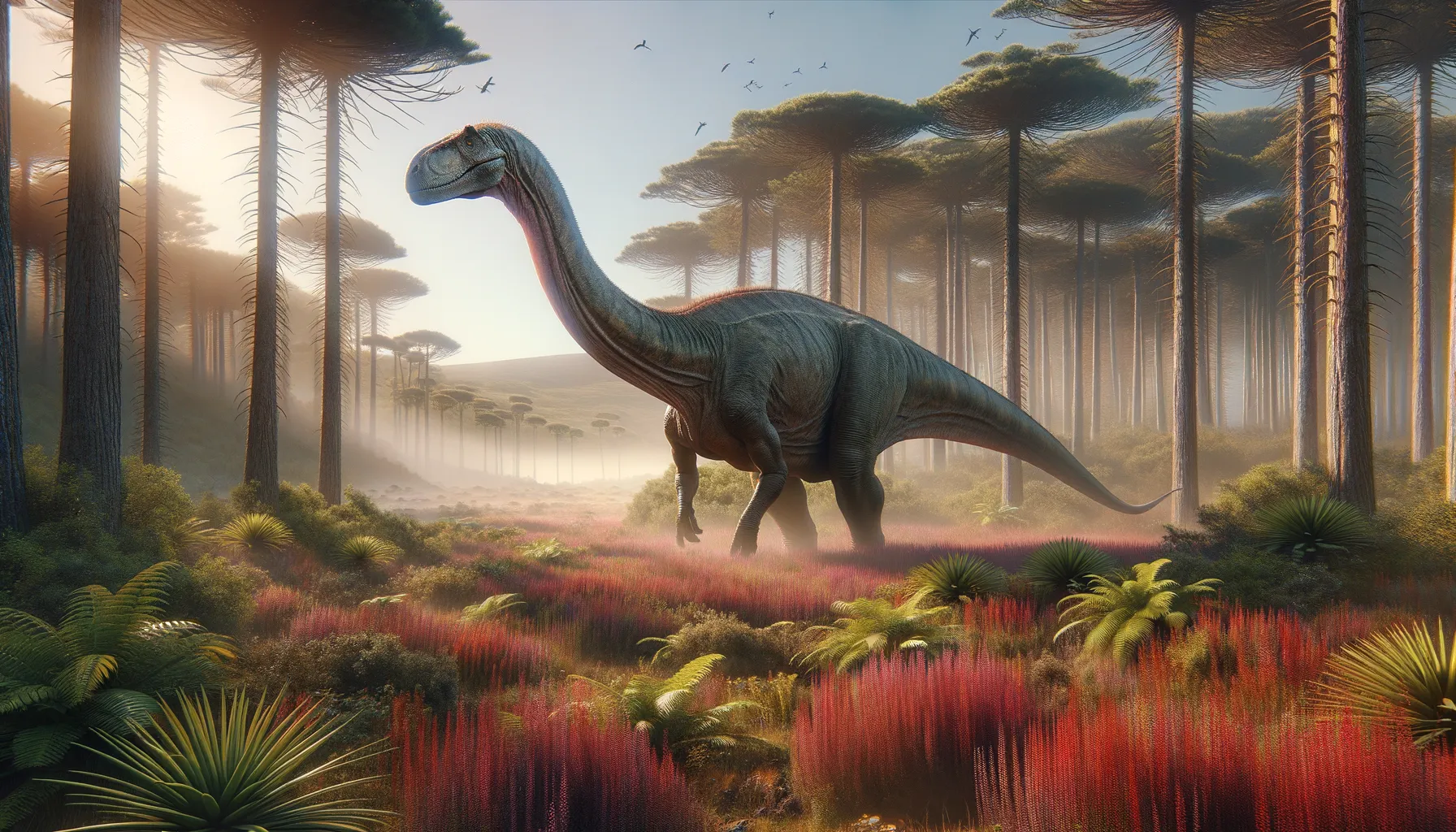
Zby
Giant of Portugal's Jurassic landscapes!
Period
Jurassic
Length
Approximately 5 to 6 meters long.
Height
Around 3 meters at the hip.
Weight
Estimated between 1,000 to 1,500 kilograms.
Zby, a plant-eating dinosaur, roamed the Earth during the Late Jurassic period approximately 150 million years ago. It was discovered in the Lourinhã Formation of Portugal. This sauropod is known for its distinctive elongated neck and tail, a characteristic shared with its relatives like Diplodocus. Zby played a crucial role in its ecosystem, helping to maintain vegetation balance and serve as prey for larger carnivorous dinosaurs.
Diet
Zby was a herbivore, feeding primarily on the abundant plant life of its time. Its long neck was an adaptation that allowed it to reach higher vegetation, such as ferns and conifers. Zby likely spent much of its day grazing to fulfill its nutritional needs.
Hunting
As a herbivore, Zby did not hunt other animals but instead adapted to evade predators. Its large size and potentially moving in groups were strategies to deter attacks by carnivorous dinosaurs. Zby's keen senses may have also helped detect danger early.
Environmental challenges
Zby lived in a landscape subject to seasonal changes, presenting challenges such as periods of drought or intense rainfall. Its habitat was rich in vegetation but could also face competition with other herbivores. Predation was a constant threat, necessitating swift flight or group living for better defense. Climatic shifts during the Jurassic may have led to habitat transformations, influencing food availability.
Speed
Likely slow-moving due to its size and build.
Lifespan
Around 20 to 30 years, based on similar species.
First discovery
Found in Portugal in 2014 by a team led by Octávio Mateus.
Fun Facts
- Zby was a plant-eating dinosaur that lived during the late Jurassic period, around 150 million years ago.
- This dinosaur was first discovered in Portugal, making it a relatively new addition to the dinosaur family since it was only named in 2014.
- Zby got its unique name from a famous Portuguese paleontologist, Georges Zbyszewski, as a tribute to his contributions to paleontology.
- It was a member of the sauropod family, the group of dinosaurs known for their long necks and tails, similar to the more famous Brachiosaurus and Diplodocus.
- Despite its giant size, Zby's remains are actually known from just a few bones, which makes reconstructing its full appearance a fascinating puzzle for scientists.
- Zby shared its environment with other large herbivores, as well as some of the largest carnivorous dinosaurs of the time, making its habitat a diverse prehistoric ecosystem.
Growth and Development
Zby's growth was similar to other sauropods, with a rapid juvenile growth phase to minimize vulnerability to predators. It reached maturity relatively quickly, but its full size took several years to achieve. Bone analysis suggests periods of accelerated growth possibly linked to favorable conditions. It continued to grow throughout its life, albeit at a slower rate as an adult.
Habitat
Zby inhabited a semi-arid environment with rich floodplains, home to various prehistoric flora and fauna. The area included river systems and seasonal lakes, providing ample water and food resources. This diverse ecosystem supported a myriad of species, from other herbivores to formidable predators. The lush plant life was ideal for Zby's feeding habits, ensuring its survival in such eras of fluctuation.
Interaction with other species
Zby shared its habitat with a variety of dinosaurs, including carnivorous species like Allosaurus. Its interactions were likely limited to cohabitation and avoiding predators. Within its own kind, Zby might have lived in small groups or herds for protection and social interaction. Competition for food with other herbivores was a natural occurrence, influencing its feeding and migratory behaviors.
Natural lifespan
Zby could live for two to three decades in optimal conditions.
Reproduction
Zby likely laid eggs, similar to its sauropod relatives, in a secure nesting environment. Breeding may have occurred during specific seasons, coinciding with optimal environmental conditions. Hatchlings and young likely benefitted from parental protection or herd dynamics, enhancing their survival. The exact breeding behaviors and parental roles remain speculative, based on related species’ habits.
Social behaviour
Zby might have lived in groups, enhancing protection against predators through safety in numbers. Herd living could also facilitate access to food sources and supportive social structures. Social interactions were potentially limited to simple communications and coordinated movements. Its behavior was shaped by environmental need and threat levels, adapting flexibly to the presence of carnivores or food shortages.
Fossil locations
Fossils of Zby were primarily discovered in the Lourinhã Formation in Portugal. This area is rich in Late Jurassic deposits, revealing much about dinosaur diversity of that time. Fossils provide crucial evidence of its anatomical features and environmental context. Zby's remains contribute significantly to understanding paleobiogeography and the distribution of sauropods in this European region.
